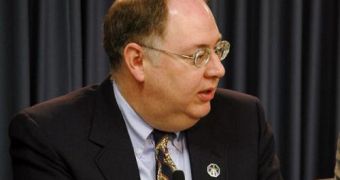Even if the new development plans adopted at NASA state that the American space agency will begin supporting the private space industry, representatives of the latter say that the federal organization may in fact be trying hard to destroy it.
Although they put up a somewhat united front in the public eye, NASA officials and executives of companies involved in designing the next generation of spacecrafts have been arguing and fighting with each other for months.
The conflict has been raging on behind closed doors, but now some of its aspects are beginning to come to light. Such was the case on November 14, when former NASA shuttle manager Wayne Hale made a statement to the media.
Hale left from the space agency this July, and got a job a the Boulder, Colorado-based consulting firm Special Aerospace Services. Recently, he said that the collaboration between NASA and the industry is destined to resemble a “coming train wreck.”
He says that the agency is basically attempting to kill the field in its infancy, by setting too much regulations in place on what private companies need to accomplish so that they can fly in space.
On the other side, NASA is saying that all requirements that it has of private space companies pertain to common-sense, and are meant to avoid disasters such as those of shuttles Columbia and Challenger.
But Hale seems to believe that the volume of objectives private businesses need to complete in order to receive NASA approval is simply to great, and also unjustifiable, Space reports.
“Somewhere along the line, we have crossed over the optimum point to ensure safety and just added cost and delay,” the former NASA official said at the meeting. He was referring to a paper the agency uploaded on a protected website.
“The document runs a mind-numbing 260 pages of densely spaced requirements. Most disappointing, on pages 7 to 11 is a table of 74 additional requirements documents which must be followed, in whole or in part,” the former official said.
“Taken all together, there are thousands of requirement statements referenced in this document,” Hale explained, saying that this will most likely lead to an increase in costs.
“And for every one NASA will require a potential commercial space flight provider to document, prove, and verify with massive amounts of paperwork and/or electronic forms,” he added.
“This, folks is the old way of doing business. This is one of the major reasons why spaceflight is as costly as it is,” the former official argued.
But the NASA commercial crew planning lead, Phil McAlister, says that the agency will start a process of including feedback from the industry within the final document.
The expert adds however that the requirements are quintessential for the safety of future astronauts and suborbital flight passengers going to the edge of space.
“NASA and the aerospace community have developed an outstanding complement of design and human certification requirements, rules, and processes that can substantially enhance vehicle reliability, improve mission success, and maximize crew safety,” McAlister adds.

 14 DAY TRIAL //
14 DAY TRIAL //